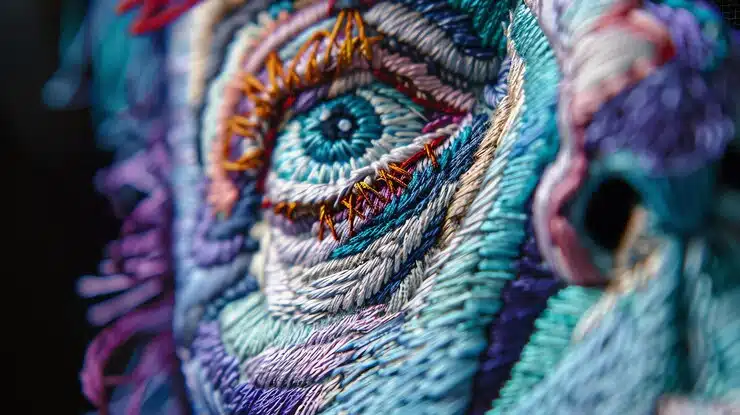The Evolution of Embroidery Digitizing: From Manual Craft to Modern Magic
Embroidery has long been a beautiful way to bring fabric to life with intricate designs, logos, and artwork. But behind every stunning embroidered piece lies a process called digitizing – turning artwork into stitch patterns that embroidery machines can follow. Over the years, this process has evolved dramatically, moving from a completely manual craft to a streamlined, technology-driven technique that saves time and improves quality.
If you’ve ever wondered how embroidery designs come to life or what goes into creating those perfect stitches, this story of evolution will give you a fascinating look at the journey – and why digitizing experts and vector art play such a big role in it.
The Early Days: When Digitizing Was All About Skill and Patience
Back in the day, embroidery digitizing was a highly skilled, hands-on job. Digitizing experts would spend hours carefully plotting each stitch by hand. Imagine sitting with a piece of artwork and deciding exactly where every stitch should go – how dense it should be, which stitch type to use, and how to make sure it looks great on fabric.
This was no easy task. It required deep knowledge of stitching techniques, fabric behavior, and the limitations of embroidery machines. Mistakes meant starting over or ending up with a design that didn’t quite look right.
One important part of the process was creating vector art – clean, precise outlines of the design that machines could follow. This was often done by hand, tracing the artwork to create smooth paths for stitching. While this ensured accuracy, it was time-consuming and required great attention to detail.
The Arrival of Digital Tools: Making Life Easier for Digitizers
As computers became more common, embroidery digitizing software started to change the game. These tools helped digitizers by providing easier ways to edit designs, simulate stitches on screen, and manage files. Instead of plotting every stitch manually, digitizers could now use software to convert vector art into stitch patterns more efficiently.
Still, early software wasn’t a magic wand. Digitizers had to make many decisions manually – choosing stitch types, densities, and directions. The software helped speed things up but didn’t replace the need for a skilled hand.
Today’s Digitizing: Faster, Smarter, and More Precise
Fast forward to today, and the process looks very different. Modern digitizing software can analyze artwork and automatically create stitch patterns that are ready to run on embroidery machines. This means what used to take hours can now be done in a fraction of the time.
These tools look at the design, figure out the best way to stitch it, and even adjust stitch types and densities based on the fabric and complexity. They can simulate the finished embroidery, spot potential problems, and fix them before any thread touches fabric.
For embroidery businesses, this means faster turnaround times, fewer errors, and consistent quality. For customers, it means getting beautiful, detailed embroidery faster than ever before.
Why Digitizing Experts Still Matter
Even with all these advancements, the role of experienced digitizing experts remains crucial. There are times when a human touch makes all the difference – especially with complex designs or special fabrics.
Experts know how to tweak designs to get the best results, combining their artistic eye with technical know-how. Many embroidery services, like those offered by nkemb.com, emphasize the value of expert digitizing to ensure every stitch is just right.
The Power of Vector Art in Embroidery Digitizing
Vector art is the backbone of embroidery digitizing. It’s what turns a simple image into a clean, scalable design that machines can follow perfectly. Modern tools can convert regular images into vector art quickly, saving hours of manual tracing.
This means logos, illustrations, and other artwork can be prepared for embroidery with great precision and speed, making it easier to produce high-quality designs on demand.
What the Future Holds for Embroidery Digitizing
Looking ahead, the process will only get better. We can expect even smarter tools that help digitizers create flawless designs faster and handle large orders with ease. These advancements will allow embroidery businesses to offer more customization, work with a wider range of fabrics, and deliver stunning results every time.
For customers, this means more options, better quality, and quicker delivery – a win-win for everyone.
Linking It All Together at nkemb.com
If you’re curious to learn more or want to see how expert digitizing works in action, nkemb.com is a great place to start. They offer detailed digitizing services, showcase the importance of vector art, and highlight how their team combines skill with technology to bring embroidery designs to life.
You’ll also find helpful resources and examples that show the difference expert digitizing makes, whether you’re looking for custom embroidery for your business or a personal project.
Embroidery digitizing has come a long way, from a slow, manual craft to a fast, precise process that blends human expertise with modern technology. Whether you’re a business owner or a creative enthusiast, understanding this evolution helps you appreciate the artistry and innovation behind every embroidered stitch.
If you want embroidery that truly stands out, working with a digitizing expert who knows how to bring your vision to life – using the best tools and techniques – is the key to success.
Would you like me to help you create more detailed sections or add examples and tips for choosing the right digitizing service?


Leave a Reply